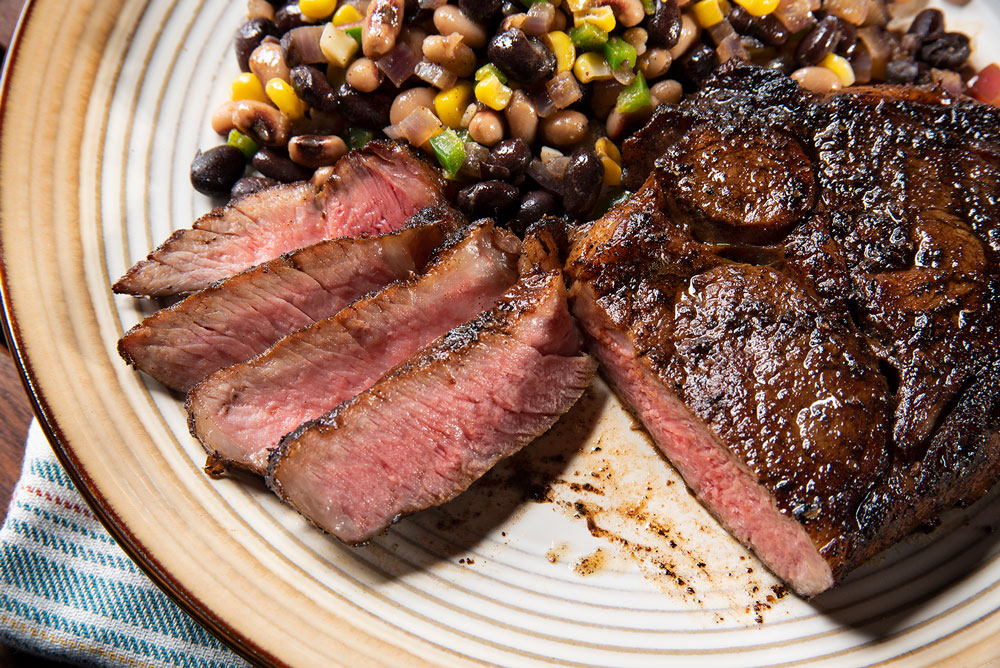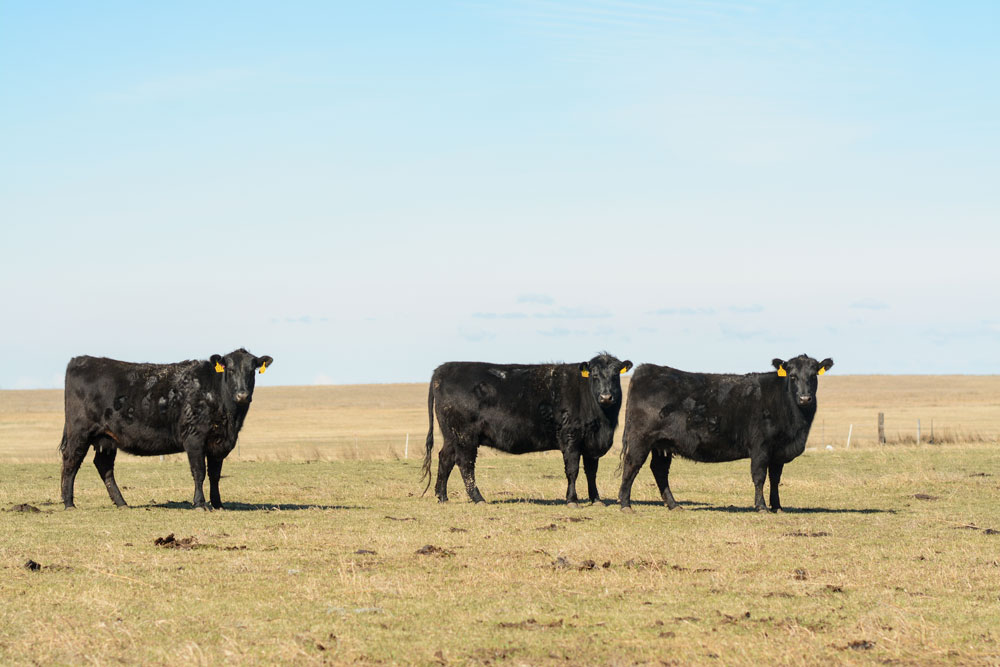
Beef cuts reposition at retail
MARKET UPDATE
The federally inspected cattle harvest last week was dramatically lower by 50K head, with a 626K head total. The vastly different week to week trend was a bit of a recoil after packers had responded to recent retail product clearance with a massive 676K head harvest two weeks ago.
Packing firms are grappling with necessary precautions for their workforces as the need to create distance between employees continues. The packing plant environment, particularly the fabrication floor, is an environment where workers typically stand elbow to elbow on the dissasembly line. The need for healthy distancing is requiring slower production speeds and some adjustments are being made to manage this.

Lest we forget that price is an important piece in rating the speed of production, the pullback in spot market cutout values last week was a clear indicator that volume was sufficient. The bottom line is that retailers largely had their buying needs met and were content to push back on packers to move prices lower. This being the case, a trend toward a smaller weekly harvest volume is likely in the short term. Early this week the daily head counts are proving this to be the case.
Replenishment of beef supplies has been occurring at retail stores although shortages of certain items were still a factor for some last week. A massive shift toward consumers cooking at home continues to create redistribution of demand across the beef carcass.
End users need to adjust their procurement styles to include a different mix of muscle cuts in order to properly value the carcass. Continuing with a normal mix of items suited to retail grocery outlets will leave value on the table with middle meats and thin meats discounted in today’s market.
Ribeye and tenderloin prices, for instance, are showing their weakness with the loss of foodservice demand. Great values can be found on those cuts as well as briskets, which have been a foodservice darling but generally more of a task to prepare at home for uninitiated beef connoisseurs. Thin meats such as skirts and flank steaks have found little price traction at retail to this point as well.
The hot items last week remained unchanged along the lines of traditional items sold at retail. The large week-on-week decline in carcass cutout values barely affected several chuck and round muscle cuts. Ground beef demand has been sharp, driving much of this end meat utilization.
Beef cuts reposition as retail becomes focus
One does not need to look far to see the gyrations that COVID-19 has brought to the beef supply chain. Beyond the paramount human health fallout, businesses are undoubtedly impacted from the farm and ranch to the restaurant.
With a nod to those very real challenges, we know that the bulk of domestic beef sales in the near term will be at retail. Since the industry in total needs to move product to get through this trying time, let’s take a look at how trends are redirecting across the carcass.
Chuck and round beef cuts have always been a retail favorite. The utility of roasts and lower price points of many end meats have made them a natural for at-home preparation. Many end meat whole muscle cuts and trim also find their way to the in-store grinder to fulfill America’s propensity toward ground beef consumption.
We’re seeing this come into full focus currently as the nation’s dine-in restaurant activity came virtually to a halt just weeks ago. In March and April 2019 the round primal contributed 17% of total dollar value to the Certified Angus Beef ® (CAB®) carcass cutout. Recent events and the retail scramble to restock the meat case has driven the round primal up from 18.5% in early March to 22% of the CAB cutout value in early April.
Similarly, the contribution of the chuck to the CAB cutout value in March and April 2019 was 26%. The move this spring has been more exaggerated than that of the round with the chuck moving up by a significant 6 percentage points to 32% of the CAB carcass total. These highlights do not displace the importance of middle meat sales, but the fact of today’s market picture is that middle meats have been devalued in favor of end cuts.
Beef demand is top priority for all stakeholders up and down the chain as the country works through the issues at hand. With the heightened focus on retail, it’s topical to point out that CAB has added value to the carcass, where commodity Choice has struggled to maintain a premium above Select. The charts below illustrate price spreads for CAB over Choice and Choice over Select for both the major chuck and round carcass primals.


It is well known that Choice and higher grade middle meats drive more value into the market during the peak demand times of the year. It’s likely less widely known that Choice and Select end meats generally trade in the same price range, with the exception of a few items. A point of emphasis for the brand is that premiums above commodity Choice are generated beyond the middle meats to the end cuts and even the thin meats like flanks, skirts and briskets.
Current events bring to mind the importance of the often overlooked availability of food. We’re pulling for every supplier, stakeholder and employee in the beef chain to make it through to brighter days. We also hope that consumers, now preparing food at home more regularly than ever before, discover that they can count on the eating characteristics of a high-quality cut of beef.
Production volumes key in near term
Thus far total 2020 U.S. beef production is more than 6% larger than a year ago. This served to keep the fed cattle supply from becoming burdensome, a looming threat through the first quarter. Even with the swift pace of weekly harvested head counts, carcass weights have defied any seasonal expectation for declines. This remains the case today with an estimated 25 lb. year-over-year increase remaining in the recent comprehensive report estimates.
With heavier carcasses we tend to see higher quality grades and this factor rings true with a current national Choice grade at 73%, even with a year ago, and Prime at 10.4%, half a point higher than a year ago. We’re essentially keeping pace with last year’s record high grading for the current period.
Last week’s 50K head harvest reduction pegged production closer to the same volume seen a year ago. The smaller head count trend is spilling over into this week and it looks like it may be here to stay as packers manage through COVID-19 logistics. Carcass weights will continue a seasonal decline into May but will most likely set a record for the heaviest spring low.

All of this points toward a richer marbling mix and elevated quality grades heading into early summer. CAB carcass certification rates should improve in the year-on-year comparison as the spring carcass weights decline yet remain elevated in relation to history for this season. Pulling steer carcass weights further away from the 900 lb. average will help draw down the portion exceeding the brand’s limits of 1,050 lb. and the 16 sq. inch ribeye ceiling.
The longer view draws attention to February feedlot placements, just 92% of a year ago and an anticipated report for March placements reduced several points more. That trend looks to overlap into April, setting up much smaller finished cattle supplies later in the summer than we’d face with the absence of market turmoil.
DON’T MISS THE LATEST HEADLINES!
A call for backup
Cattle health via genetics

Beef up the dinner table

The Porsche of beef
Read More CAB Insider
$100,000 Up for Grabs with 2024 Colvin Scholarships
Certified Angus Beef is offering $100,000 in scholarships for agricultural college students through the 2024 Colvin Scholarship Fund. Aspiring students passionate about agriculture and innovation, who live in the U.S. or Canada, are encouraged to apply before the April 30 deadline. With the Colvin Scholarship Fund honoring Louis M. “Mick” Colvin’s legacy, Certified Angus Beef continues its commitment to cultivating future leaders in the beef industry.
Carcass Quality Set to Climb Seasonally
With the arrival of the new year the beef market will rapidly adjust to changes in consumer buying habits. This will remove demand pressure from ribs and tenderloins, realigning the contribution of these most valuable beef cuts to a smaller percentage of carcass value
Misaligned Cattle Markets and Record-high Carcass Weights
Few things in cattle market trends are entirely predictable but the fact that carcass weights peak in November is as close to a sure bet as one could identify. Genetic selection for growth and advancing mature size has fueled the long-term increase in carcass weights.
